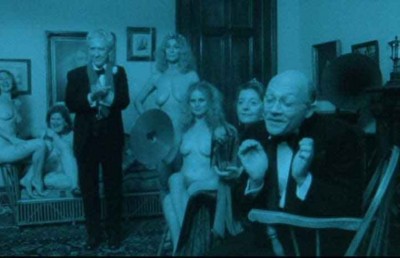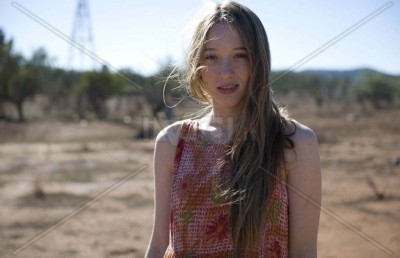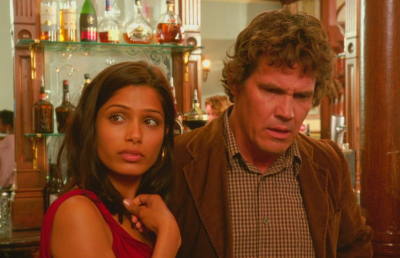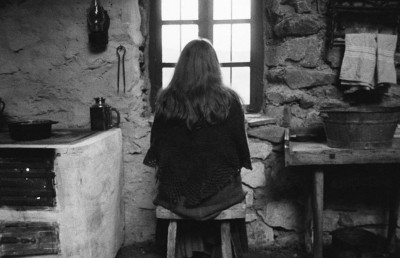Beauty at the Margins: The Vancouver International Film Festival, 2010
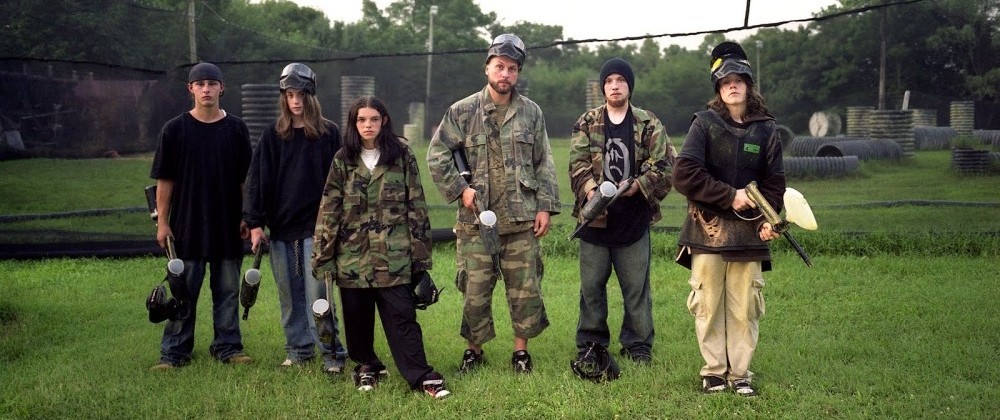
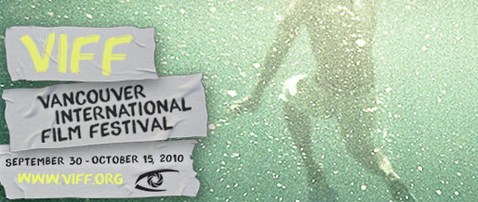
Susan Sontag’s funereal essay “A Century of Cinema” rests on assumptions about the decline of cinema and cinephilia that I’ve always responded to defiantly, but there’s one sentence that, in its use of the past tense, hits home for this Vancouverite: “For some fifteen years there were new masterpieces every month.” I wasn’t alive during the glory era of art cinema that she pines for, but I’m old enough to remember a time when “new masterpieces” were projected in theatres on a consistent, as opposed to intermittent, basis. There are still great films produced year-round across the globe (a fact that Sontag’s piece obfuscates), but in this town most of what we get to see of them is squeezed into two and a half weeks once a year: “There are new masterpieces every late-September-to-mid-October.” That’s the state of world cinema in Vancouver; the horrible thing is that this city is better off than many in this respect. DVD (and now Blu-Ray) has played a role in this degradation, and compensates for it to a significant degree. But the decline in diversity of theatrical projection precedes the home viewing revolution; what’s more, without the public exposure of theatrical release, many masterpieces arrive on DVD without the publicity that would help them gain the audience they deserve. In terms of a North American audience (the only one I’m presuming to speak about), world cinema horizons have actually broadened since the glory days Sontag pined for. In the Sixties and Seventies, “foreign” cinema largely meant Europe, North America, Japan and Latin America; now we have mainland China, Taiwan, Hong Kong, South Korea, India, the Middle East, Southeast Asia and Africa to contend with as well, and new national cinemas keep leaping onto the stage. “World cinema” now truly means world cinema. And, unlike in the 60s and 70s, it isn’t defined by esoteric fare —there are creditable genre movies reaching us from South Korea, India, Hong Kong (still) and many other places. What we have is an embarrassment of riches. So why is it all so marginalized? Home viewing is a huge factor, sure, but it would be wrong to stop there: there’s also the consolidation of theatre ownership; the decline of small distribution companies; the dominance of the multiplex system and its elbowing of single-screen venues, which can afford to be more adventurous in their programming, out of the market; the decision of Hollywood to remake foreign genre movies instead of picking them up for distribution; the industrial coaxing of the art cinema audience away from genuinely innovative movies and towards English language mediocrities notable mainly for their lack of explosions and fart gags; the rise of the cheap (in multiple senses of the word) journalistic-polemical documentary; and the myopic laziness of an increasingly corporatized culture of film reviewing. It’s a familiar list, and there are two things worth adding to it, if not as complaints. Firstly, there’s the matter of sheer volume and diversity: it would be hard even for the most ideal theatrical market to accommodate so much good stuff from so many countries. A more minor additional factor is the ruling aesthetic of severity in contemporary international art cinema, which is broad enough for tons of variation, and within which countless masterpieces have been produced, but which —let’s face it —is less inviting to the uninitiated than, say, La Dolce Vita (Federico Fellini, 1960), Knife in the Water (Roman Polanski, 1962), or The 400 Blows (Francois Truffaut, 1959). Sure, more “difficult” fare than those movies found a North American audience back in the day, if often a smaller one than the crossover hits scored. But even then there was usually something in the films to push past the idiosyncrasy towards Western commercial taste: glamour, however problematized (Antonioni); melodramatic codes (Fassbinder); wacky grandiosity (Herzog); pop culture touchstones (60s Godard). Most importantly, there was more expressive dialogue; more conventional patterns of cutting, duration and framing; and, relatedly, more emphasis on dramatic identification than there is in the work of many contemporary arthouse masterpieces. I’m speaking broadly here, and there are many exceptions to this trend (a few of which I review below), but I think the generalization is valid and pertinent. What we have in North American theatrical cinema culture is a perfect storm of restriction: industry-driven homogeneity, journalistic laziness and corruption, Hollywood’s penchant for co-option over multiculturalism, and a trend towards radical austerity in defiance of mainstream film practice. Here’s how this dynamic breaks down in my hometown.
Vancouver has two non-profit arthouse theatres, both excellent institutions: the Pacific Cinematheque and the Vancity Theatre. Screenings of recent foreign cinema make up an ever-shrinking portion of the Cinematheque’s programming these days; revivals are much more common. Vancity is better in this respect, but its programming of contemporary foreign fare has markedly decreased of late. The Blinding Light, our heroic avant-garde and short film forum, has long since shuttered its doors. The Ridge, Vancouver’s key commercial repertory theatre, provided an eclectic mix of mainstream and esoteric, old and new, emphasizing American and British work but taking in the whole world. Then it stopped showing newly released art films; next to go were the arthouse and Hollywood revivals. Eventually the programming got even more restricted, and then a change in ownership erased the last vestiges of repertory programming. Fifth Avenue Cinemas, which started out as a Weinstein-era pseudo-arthouse, not coincidentally around the time the Ridge’s decline began, has now only the flimsiest pretence of adventurousness, sticking Focus Features releases next to blockbusters in their schedule. You might occasionally catch the most mainstream of foreign fare at two of our corporate first-run multiplexes, but only if you’re very quick about it. In terms of theatrical projection, “new masterpieces” here means whatever intermittent greatness Hollywood can muster these days; whatever gems one can see at our East Asian and East Indian venues, next to zero in number despite the huge local constituencies; the increasingly occasional –and always brief– scheduling of newly released films from the likes of Jia Zhangke, Eugene Green and Hou Hsiao-Hsien at our non-profits; and, once a year, the Vancouver International Film Festival.
The VIFF is a maddening concentration of riches, particularly in the Cinema of Our Time and Dragons and Tigers sections. The former is a survey of international cinema, including genre movies but mostly emphasizing less commercial fare. The latter is one of the most significant film programs on the international circuit: the festival guide calls it “The largest annual exhibition of East Asian films outside Asia,” which is proof in itself. The section, founded in 1985, was programmed exclusively by Tony Rayns until 2006, at which point Chinese cinema specialist Shelly Kraicer came on board to cover mainland China, Hong Kong and Taiwan, leaving South Korea, Japan, Thailand and the Philippines to Rayns. (The division is less clear for the countries, like Indonesia and Malaysia, who have only one or two films picked each year.) As of 1995, the year of Sontag’s essay, the second great renaissance of international art cinema –inaugurated by breakout works like Hou’s A City of Sadness (1989), Tian Zhuangzhuang’s The Horse Thief (1986) and Abbas Kiarostami’s Where is the Friend’s Home (1987)– was in full swing, and it’s still going strong. Sontag’s essay states that “new masterpieces” “have to be actual violations of the norms and practices that now govern movie making everywhere in the capitalist and would-be capitalist world –which is to say, everywhere.” She didn’t acknowledge the successful institutionalization of such violation –the norms and practices that operate in defiance of capitalist ubiquity, and that share its active transcendence of national borders and cultures. It’s a persistent, durable film counterculture in which almost no one seems to be in it for the money. The crumbs of charity from corporate sponsors; the generosity of governments; and the hard work of bureaucrats, investors, producers and programmers are somehow enough so that a plethora of new masterpieces can be made and projected at festivals every year without much expectation, or even need, for them to make any significant amount of money. Hou and Kiarostami have entered the top region of the canon without achieving much commercial success; they, along with Tian, Tsai Ming-Liang, Claire Denis, Apichatpong Weerasethakul, Jia Zhangke, Pedro Costa and dozens more from around the globe have been able to produce deeply countercultural and radically anti-commercial works on a more or less consistent basis, and institutions like the VIFF are crucial in this dynamic.
But liberation and restriction often go hand in hand (a key theme of one of the best films I saw last fest), and here the restriction is temporal. There’s just no way for programmers to cram one year’s worth of masterpieces into two and a half weeks, and no way for audiences to catch all of the highlights from what does make the cut. And unless you’re on vacation (disclosure: I worked for the VIFF last year as a lowly ticket agent, as well as writing program notes for the Canadian Images section), the binge is exhausting and depleting: scheduling conflicts, food and sleep deprivation, frantic venue-hopping, line-up panics and, most embarrassingly, loss of consciousness. One of the worst feelings in the world is nodding off during a movie you were actually enjoying. Last year my most agonizing choice had a bitterly ironic outcome. Jia’s I Wish I Knew was in conflict with Imaizumi Koichi’s The Family Complete, a movie about a grandfather being raped by his “pet man-in-a-cat suit,” which “triggers a virus which compels everyone in the family to have sex with Grandpa.” (Rayns sure knows how to pick them, and his write-ups are often classics in themselves: this film’s note concludes with “The film is for broad-minded adults only, especially chubby-chasers.”) What makes these choices horrible is that they’re haunted by the likelihood you’ll only get one chance to ever see each film projected. Foolishly, I chose the Jia, during which, despite every ounce of strength I could muster, I nodded off. Now it’s coming to the Cinematheque (whaddya know!), and I doubt I’ll ever get to see The Family Complete. These are the cruel terms of world cinema culture in Vancouver. The following films are the most notable ones I was able to see, and stay awake through, at last year’s festival.
Lee Chang-dong’s Poetry begins, like so many great stories, with the discovery of a dead body. A pastoral scene by a river turns morbid without the director interrupting the placid mood –a small miracle in itself. Lee introduces a group of children playing by a river’s edge, then cuts from a shot of a kid looking quizzically off-screen to his viewpoint of a distant object floating in the water, and finally to a closer view of the object, now identifiable as a corpse. This last cut is arrhythmic without being jarring; it makes the change from subjective incomprehension to a more objective view of horror seem almost subliminal. The questioning, expectant gaze is a repeated motif in Poetry: we see the protagonist Mija (Yun Junghee) looking away in speculation and anticipation, waiting to take in something often invisible to the audience, something that needs to be apprehended, something that’s part of her world but not yet part of her life. This thing can represent a promise, an imposing standard, or a threat –sometimes all these and more at once. This is a movie about the effort to define potential –about looking for something you can’t identify for reasons you can’t express.

Mija is a 66 year old grandmother, saddled with caring for her absent daughter’s son Wook (David Lee) in a small city in Korea. She supplements her social assistance income by doing homecare work for a cantankerous, crippled old man and endures Wook’s teenage rudeness with admirable stoicism. Near the beginning of the film she’s diagnosed with early onset Alzheimer’s; her next move is to join a poetry writing class at the local community centre. It’s not spelled out that this decision is a response to the diagnosis; the connection between poetry and her medical state only becomes clearer at the end and is, I think, more symbolic than psychological. Mija’s actions follow one another without conventional disclosures of motivation, yet she’s an extraordinary human presence: we see her in moments of transparent emotion with its implications left undefined. In a perfect parody of consumer-era approaches to art, she sees the class assignment to write a poem in functional terms, viewing inspiration as a product to be apprehended by taking simple, clear steps. This points to Poetry??’s most obvious value: as a satirical riposte to movies like ??The Lives of Others (Florian Henckel von Donnersmarck, 2006) and Dead Poets Society (Peter Weir, 1989), with their reductive, self-help-era commodifying of art. Mija’s eventual inspiration comes despite her exercises of will, and is not at all life-affirming. It relates to the film’s themes of violence and sexual inequality, developed by the story of that mysterious corpse and its connection to her grandson and his friends’ brutal activities, which are contrived to be hushed up by a group of realistically callous local men. Mija’s poetry teacher tells his class that the world will reveal its beauty if they look at it intently. She looks, and it’s not beautiful; the conventional humanistic view of art and its positive power is shown to be presumptuous to say the least. Mija’s arrival at some sort of clarity takes the form of a realization that there’s not enough poetry in her life alone; her devastating conclusiveness seems like the kind you could only reach when you have nothing left to lose. It’s at the end of Lee’s story that the use of Alzheimer’s becomes clearer in its function: the filmmaker is connecting ultimate revelation with the end of power. Mija gets to realize the truth, but only just before it ceases to matter to her. She achieves the freedom to comprehend just before she loses the freedom to act.
Poetry is shot with a precise, unassuming legibility that doesn’t preclude a strong sense of disorder, and Lee keeps a modest distance from his characters; he also pushes the sense of irresolution by shooting frequently with a handheld camera. Like most festival-circuit filmmakers, he holds back from conventional dramatic engagement, if much less radically than distanciation-fetishists like Hou or Tsai. The style isn’t totally anti-classical: the aesthetic choices are self-effacing and there are lots of conventional medium-shots and close-ups, motivated by the back and forth of speech. But there’s also a lot of ponderous wide-angle withdrawal, which destabilizes the mise en scene without sacrificing clarity. The shot scale evokes detachment, and the camera movement evokes instability –not bad as an approximation of elderly subjectivity. It’s quite something to see the handheld camera used with such modesty these days. Usually it signifies a desperate urge on the part of the filmmakers to take you into the existential position of the characters; here it works with the distance of the camera to evoke not only dislocation, but speculation and indeterminacy –not just Mija’s but Lee’s as well. The camera movement is so subtle that it might seem underused by some, but its employment is actually very special: it’s used as a possibility as much as anything else. Hardly moving at all compared to what current moviegoers are used to, it spells out the potential for change, both inspiring and threatening, more than the change itself. The subtly unstable perspective adds suspense to Mija’s intellectual journey, with camera movement gaining as much power as a potential event than as an actual one.
Lee uses a bit of parodic stylization on his protagonist –she’s comical in her wide-eyed naiveté and her pretentious fancy dress– but it isn’t jarring because she’s so consistently balanced with the other characters, never overwhelming the dialogue scenes. He consistently embeds her and her dilemmas in an indifferent world, with shots of her walking through a parking lot as a woman erupts in grief and a crowd gathers; in the exterior background as a group of conniving men stare at her from a restaurant table; and, most brilliantly, in her introduction, as one of many patients in a hospital waiting room who’s identified by a cell phone ring she mistakenly thinks is hers.
Poetry strikes a balance between the more accessible communication of the crossover art cinema of the Sixties and Seventies and the contemporary festival-film ethic of mysterious exteriority. Even with the sense of conclusive revelation, big gaps in our understanding of Mija remain as the movie ends, and our engagement with Lee’s art parallels Mija’s struggle –except that, of course, she’s way ahead of us at the end. Poetry emphasizes this gap in knowledge, rather than obfuscating it as a more conventional character drama might. The first time I saw the movie, the ending was a bit disappointing, as if the sense of openness and confusion could only be betrayed by closure; but on a second viewing the conclusion seemed, if not inevitable, then at least intricately connected to the rest of the story. This is a deeply cynical film, but the cynicism is earned, which is uncommon these days. And it doesn’t preclude intense moral engagement.
The term “indie,” in the dominant –i.e. American– film context, no longer has any positive meaning; it’s defined by what it excludes, which gets less and less as time goes by. It can refer to anything from movies like So Yong Kim’s In Between Days (2006) and Sofia Coppola’s Somewhere (2010) –is American unpretentiousness the only reason they’re not called “art films”?– to formally unadventurous off-Hollywood fare like Winter’s Bone (Debra Granik, 2010) and Capote (Bennett Miller, 2005) –stuff that major studios used to produce and distribute in the Seventies and Eighties. In the context of East Asian cinema, however, the term seems to have a clearer meaning: films that benefit from neither big private backing nor state funding. These films pop up regularly in the Dragons and Tigers section of the VIFF; recent triumphs include Kim Kyung-Mook’s Faceless Things (2005) and Yang Heng’s Sunspots (2009), movies that create formally ravishing images and structures out of micro-budgets, basic settings and digital video. Stuff like this has been proliferating thanks to the technological democratization of film production and reaching adventurous audiences in the West thanks to programmers like Rayns and Kraicer; the best of this type of movie I saw at the 2010 festival was Kang Sangwoo’s A Silk Letter, from South Korea.

Jung Hojoon plays Sungwoon, a young gay man who has rejected his call for mandatory military service. He lives a life of poverty, purity and agonizing suspense in a tiny, undecorated apartment with his high-school dropout lover (Choe Jinhwan). Their life together, full of passion and misery, with the two shut off from the world around them and finding not enough sustenance in each other, illustrates the cruel paradox of a repressive society, where being true to oneself often means exchanging one prison for another. For Sungwoon and his lover, freedom and defeat are part of the same equation. There are few settings in the film, and –I assume– no need for paid extras or official use permits; it’s a video chamber piece in which austerity precludes the need for permission. Industrially and internally, A Silk Letter is about the liberations and constraints that come with rebellion, but in terms of overall quality only the liberations seem to matter. The restrictions on these types of films seem less important than ever nowadays, thanks to the availability of cheap, good video and the contemporary non-commercial film aesthetic of starting from and complicating documentary directness. It’s now normal to poeticize simple found settings with little or no production design mediation, and inexpensive video cinematography can do this as well as 35mm and 16mm ever did –just in a different way. Now that digital video can produce clarity and fidelity –detailed lines of delineation and convincingly rich colours– it no longer seems like any kind of compromise for feature filmmaking.
A Silk Letter has a casual, readymade feel that makes its moments of serendipity all the more beautiful. A great example is the shot, early in the film, of Sungwoon sitting on a box in front of his apartment, reading a letter from the government regarding his military obligation. As he reads the letter (heard in voiceover), a cat walks by him on the pavement. The cat figures prominently in the film’s vague symbology –since this is a good film, it’s reductive to say the cat “represents” lower status and freedom, but it evokes those concepts without the filmmaker choosing formula over suggestion. In the middle of the film the two human characters will have a poetic but convincingly realistic conversation about felines, and in the film’s final shot the cat will suggest an escape that may be impossible for the two human characters. Here, early on, it’s just an object in the frame passing idly by. The timing works down to the very second; the cat’s crossing the frame at this precise moment of voiceover speech puts it into a pattern that’s invisible at this point but will be fulfilled through recurrence and variation. A tiny moment like this could have come through many takes –cheaper when you’re working on video with small means– or it could have been a pure chance that Kang made the most of. Another example of low-budget serendipity is the movie’s stunning second shot. It shows Sungwoon, unidentified as yet, as a speck of shadowed presence in the distance. He stands by the Han River, with cars moving above him on a bridge, a concrete building to his right and an empty parking lot in the foreground in front of him. The water, skyline, traffic and anonymous concrete architecture dwarf him without diminishing him; he’s highlighted and overwhelmed. The symbolism is so compact and unpretentious as to be totally subsumed into the wider text, which is “about” marginalization, individuality, and the way each accentuates the other. Kang uses nothing but easy camera placement and the simple presence of one actor to discover meaning in the ready-made physical world. It’s a shot worthy of Antonioni and the best of the Anthony Mann/John Alton collaborations.
Like many –too many?– contemporary festival-circuit masterpieces, A Silk Letter embraces slow pacing, long takes, fixed camera positions and a rich sound mix, along with minimal plotting and lots of dialogue-free screen time. The harsh exceptions to the long-take-fixed-angle aesthetic are the brief scenes of Sungwoon walking around Seoul in a fit of pressurized panic. These are shot with a jittering handheld camera, with random and rapid cutting including digital jump-cuts. It’s a blunt contrast, but the very directness of the film –there is distanciation but no discernible guile– makes the bluntness feel right. And it hangs tight to the story’s implications in more than a broad way; the contrast in styles creates an emotionally specific analogue to the extremities of political, sexual and economic embattlement. Sungwoon is a caged animal indoors, and a hunted animal outside. Solace from society is alienation; engagement with it is oppression. And the opposition is structural and musical as much as it is thematic –two opposing notes in a simple, beautiful riff. It’s also a good case of emphasis by respite: the overload of these brief scenes makes the languorous intimacy of the interior scenes more pungent. The reductive severity of the film’s apartment-set majority is also very steamy: there’s a healthy amount of shirtless cuddling, murmured romantic affirmation and pretty hot sex. Kang’s style aims for close-range sensuous indulgence, and the ultimate measure of its success is the movie’s huge erotic power. The hyper-focused aesthetic that rules art cinema today produces its magic by combining visual freedom with visual confinement –the long shot-lengths lock you in but give you time to roam. What separates the bandwagon jumpers from the genuine visionaries is organic complement between style and story implication: here the freedom/confinement dynamic rhymes perfectly with the characters’ life situation. Sungwoon and his lover are free to express their love and face ridicule and rebuke, to exercise their conscience and go to jail. The alternative is what we see onscreen; freedom of expression for them is the same as confinement, and their engagement with each other is all the more intense for being imprisoned within a small, bare room that they’re afraid to leave.
Matthew Porterfield’s Putty Hill (“indie?” “art?”) is an opportunistic film in the best sense of the word: it takes from documentary conventions real people and a lack of concern with the subsuming of incident into dramatic pattern, and it takes from fiction nothing much except the license to violate factuality if it can produce something great. It consists of interviews, (minimal) actions, and conversations between people that may be fictional, documentary, scripted, improvised, or any number of complex combinations thereof. The subjects (?) of the movie are citizens, mostly young adults, of a white working class section of Baltimore. Most of the people we see are addled by drugs, family dysfunction, poverty and aimlessness; the often-obscured epicentre of the narrative is a kid named Cory, a recent O.D. fatality. Porterfield shows us his friends, acquaintances, family and many people indirectly connected to him; some of them talk about him, others talk about themselves. His death is never hyped up –nothing in the film is.
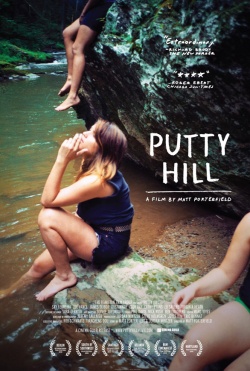
Putty Hill is enigmatic but with a strong sense of physical reality, focusing on subjects with what at first seems a lack of attention to context and background. The people supply these themselves through their unstructured speech, and a loose coherence emerges as reminiscences and confessions form a fractured pattern of anomie. There’s a well-buried editorial slant to the film’s fragmented storytelling mode: the people are trying to shut out the past and future and the true meaning of the present, and the film’s desultory but intensely focused narrative mirrors that mind state, only partially transcending it as the commonalities accumulate. The combination of dislocation and intimacy is similar to that of Charles Burnett’s Killer of Sheep (1977), ??Putty Hill??’s most obvious antecedent. Mainly, though, what the film’s vibe owes itself to is recreational drugs: the feeling of an intense, walled-in, all-important present, the prioritization of the visceral moment over long-term linearity. Continuity in this film is expressed subtly: Porterfield uses sound design to illustrate an almost subliminal constancy, as if to stress the peoples’ unawareness of it. Often the sound bridges the fragmented images: Porterfield puts jump cuts into his footage without corresponding cuts on the soundtrack, so that random variations in perspective are contradicted by aural consistency.
Cory lurks in the background for most of the film; the climax –if it can be described that– is his memorial service, where the themes of tragedy and avoidance that have dominated every second of the preceding screen time threaten but, appropriately, fail to come to a to a boil. An enlarged photo of Cory is mounted in the centre of a room, giving us intermittent chances to look for clues. Cory looks serious and faintly surly; his expression has a hint of defiance projecting outwards towards the film’s people and the audience. It’s hard not to think of Antoine Doinel (Jean-Pierre Leaud) frozen in the closing image of The 400 Blows, an analogue that makes this scene even more heartbreaking in its gloomy answer to the suspenseful irresolution of that film. The people at the memorial seem afraid to look back at him, and Porterfield makes these avoidant actions ring true, never milking their root implication. Porterfield, like his characters, always puts a wider perspective second. The sequence, with its culminating denial of catharsis, digs deep into the paradox of grief: wanting to have a target for your love and sadness, and being faced with a dead body or an urn. Here it’s a photo, which makes the one-way discourse even crueller for the promise the image makes. Since this is the only time we see him, it’s hard to say how “natural” his teasing expression is. What we have here frozen in time could be exceptional or essential or anywhere in between; you can piece together what you’ve heard about him from the film’s people, if you choose. But Putty Hill is about opacity in the midst of a wealth of detail. One of the best things a movie can do is acknowledge the mystery of representation, and Porterfield does that here by giving us rich human portraiture with a strong sense of limitations. And these limitations don’t work against the visceral power of the film; they help create it.
Xavier Beauvois’s Of Gods and Men takes three dynamite story conceits –imprisonment, siege, and the ticking-time bomb scenario– and turns them into debating points without ever sacrificing suspense or emotional authenticity. The film’s story, embellished from actual incidents, is of a Trappist monastery in rural Algeria that comes under threat from Muslim extremists during the civil war of the Nineties. We’re never allowed to forget the slow-burning fuse, and Beauvois increases its prominence in the often-desultory story with a thriller-like calculation. Danger starts as a distant element, becomes a peripheral one, and ends as a central one, but what seems counter-generic here is that the increase in danger isn’t matched by a decrease in irresolution. This is a film in which mortal suspense provokes contemplation and equivocation instead of working against them, and the achievement is visual as well as narrative. Beauvois makes great use of Cinemascope for depicting contrast and coalition; the multi-character shots allow for contrapuntal reflection without montage and with the power that grows from closer camera range. There’s nothing miraculous about this skill –it’s just one that Beauvois shares with many good directors. He applies his stylistic equivocation to the exterior scenes equally well, ’Scope allowing him to situate the characters in a rich setting while stressing the human face. The result of all this visual democracy is a sense of interconnectedness and contradiction that precludes most certainties, and the film’s ending does little to tidy things up. The movie gets its power from matching moral urgency with moral confusion.
The ensemble cast is one of the best I’ve ever seen. Every speaking part, in and out of the monastery, is beautifully performed, but the highlights are Lambert Wilson as Christian, the head of the monastery, who best embodies the psychologically exceptional nature of monasticism; Michael Lonsdale as the calm and bemused doctor-monk, with a rich, relaxed purr to his voice that deceptively evokes sophistication and resignation –only the sophistication is real; and, most movingly, Jacques Herlin as Amédée, the ancient, diminutive monk whose depiction is iconically static –his face seems frozen in a near-senile expression of wonder. Most of the French cast employ the time-honoured Gallic acting technique of placid understatement, a sort of focused but limited expressiveness that lets nature-granted appearance and calm speech do most of the work. It’s a style that values essentials: an actor’s face as it is, more than what he does with it; a character’s words, more than how they’re delivered. The flashes of emotion here are always brief; the most moving ones usually involve Christian, who seems to be pursuing a tightrope balance between theological severity and realism. Wilson conveys the effort of thought and the pain of compassion like few actors I’ve seen; his smiles always seem tentative and provisional, and his grimaces when faced with horror are heartbreaking for the strain he shows in his character’s efforts to curtail them. And of course the monotony of the monks’ garb throws their faces into relief, emphasizing their particularity all the more. In real life our natural facial appearances seem superficial –most of us feel guilty about assigning any non-sexual value to them. In most movies, though, we guiltlessly extrapolate from them, and one very conventional aspect of this film is how much it exploits this tendency within a realistic execution.
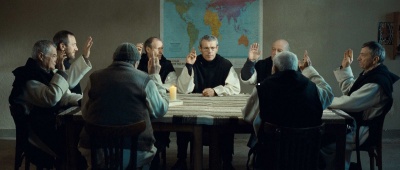
Of Gods and Men centers on a dilemma that most people would never encounter. The monks debate whether or not to flee the political violence, caught between fear on one hand and Christian pride and dedication on the other. Most of us, including religious Christians, would just bail –and there’s no evidence in the film that these monks would advise them otherwise. The validity of the monks’ final choice depends on a belief in their exceptionality, Christian assumptions of humility notwithstanding; for the movie to work on a modern Western audience sympathy has to do a lot more work than identification. For me this very realistic film involved suspension of religious disbelief, and it came easily. Beauvois seems to view the Trappists with a mixture of respect and aloofness; he portrays all of them as exceptionally decent men, and seems very conflicted about the implications of their actions. Sympathetic-but-critical is a common perspective for good filmmakers, especially nowadays, when it seems like admiration of heroes has to be severely complicated for a movie to even be good. This is a film that portrays beauty in ultimately impotent virtue. What it and Le Petit Lieutenant (2005), the other Beauvois I’ve seen, show is a perspective in which sympathy for authority seems connected to a strong sense of its weakness. In this respect the films are utterly contemporary.
Jacques Rivette’s Around a Small Mountain opens with a woman in need. A Range Rover sits on a country road with the hood up and its passenger, Kate (Jane Birkin) standing in front of it, clearly at a loss. (A small mountain looms in the background; its connection to the film’s title stays just oblique enough to put the audience to work.) An engine is heard off-screen, and we see her hopes rise and fall as a sports car whips by. Off-screen, we hear it stop and reverse. A man, Vittorio (Sergio Castellitto) steps onscreen, approaches the Rover, looks at the engine, flips a few switches, fixes the problem, and then takes off. It’s a suggestive précis for the film; clear in its thematic dynamics but full of suspenseful ambiguity that will be redeemed –but only partially– by the movie that follows. Rivette’s film is about a prideful man who gets humiliated while helping a humiliated woman gain her pride. Vittorio’s humiliation is nothing too painful, just a matter of being drawn into the art he passes judgement on as a spectator. Kate is a middle-aged woman who has left her travelling circus troupe following the death of another member; the film is the story of her return to the fold, guided with no small amount of arrogance by the strutting Vittorio, who is in turn brought to the stage from his aloof position –a critic becoming an artist. The self-reflexive dynamic of detached control vs. surrender into participation is a classic art cinema theme, brought closest to perfection in Rivette’s other, more ambitious works and Kiarostami’s films of the Nineties; this is a brief (84 min.), low-key take on it.
The classical style of direction here is so well-defined that it becomes as meta-textual as the story. The variations in camera position and character placement are deliberately timed for self-emphasis, but it’s not bombastic; Rivette has his tone balanced at a precarious point between blatancy and discretion. His compositions are detailed but almost obtrusively easy to scan, and he guides the eye within them clearly and deliberately. He’s great at being explicit and vague at the same time; his aesthetic strategies are laid bare but their thematic purpose is not. There’s a lot of gently paced but wilful camera movement, creating precise but transitory images like a camera movement leftward to follow Jane as she concludes an important conversation and moves away from her companion to be framed against a blank white wall. And Rivette knows how to park the camera and hold a shot without losing momentum –a rare talent in these days of rapid-fire cutting on one end of the spectrum and obstinate stasis on the other. The film is full of purposefully mounted tripod shots and relatively lacking in shot-reverse-shot cutting; it has a strong sense of focus even as it moves at a conventional story pace, with most scenes representing a plot turn, however minor. Jonathan Rosenbaum’s assigning of equal indebtedness to Lang and Renoir by Rivette seems especially apt in relation to this movie: the synthesis is an equal sense of floating impermanence and sharp precision. [1] The former underscores the characters’ rootless European wanderings and their susceptibility to radical change; the latter stresses the moments of clear thought and decision that bring this change about. Watching Kate and Vittorio transform decisively over the course of the film is an old-fashioned pleasure; this is the kind of movie where characters do learn lessons at the end, but it doesn’t feel insulting, largely because of the distance Rivette creates by his gently heightened style.
There’s nothing original in the high-concept story idea behind Aaron Katz’s Cold Weather. The movie is the umpteenth variation on the normal-people-caught-up-in-dangerous-mystery idea, perfected by Hitchcock but stretching way beyond his work. What makes Katz’s film special is its calculated grafting of the trope onto a realist aesthetic of quotidian inertia. The contrast is so strong that it makes the interaction almost fable-like, with the excitement of the genre tropes and the banality of almost everything else pointing towards a self-conscious affirmation: look what fiction can do for your ordinary life! The idea of art as existential self-help is both affirmed and satirized, like in Around a Small Mountain and, on a much bleaker level, Poetry. The main character, Doug (Chris Lankenau) is the latest in a seemingly endless, and at this point tiresome, parade of American movie slackers; he embraces responsibility and determination when his life starts to resemble the Sherlock Holmes stories he reads. He’s a rudderless ship when the film starts –a recent forensic science dropout, sponging off his sister for accommodation in Portland and working at an ice factory. There’s nothing wrong with factory work, unless you want to do something else, which Doug seems to –though at first we can’t be sure, given his evasive inexpressiveness and the sense of foggy, stunned confusion that he radiates. It’s only when life starts resembling genre fiction that he’s able to articulate his desires, which cuts both ways: as an ironic comment on our cultural dislocation and a validation of the power of imaginative entertainment. The film doesn’t come down firmly on one side of this question, and I don’t see why it has to: there’s truth in its ambivalence.
It’s at work that Doug meets the film’s most engaging character, Carlos (Raul Castillo). Carlos is vaguely macho, winningly forthright and not inordinately reflective. He’s radically different from Doug, and one of the best things about this very good-natured movie is how convincing Katz makes their bonding. He manages to emphasize Carlos’s “otherness” from Doug and his milieu without any real condescension –indeed, he uncritically views cultural difference as part of each character’s fascination with the other. Carlos and Doug seem to already be on the way to a decent friendship when something happens that really bonds them: the disappearance of Rachel (Robyn Rikoon), an ex-girlfriend of Doug’s and a new romantic interest of Carlos’s. At first her disappearance seems innocuous, but Carlos, freshly under the spell of the Doyle book Doug has lent him, insists that they dig into the matter, and things start to point to dastardly deeds. Katz expertly portrays the escalation of crime from remote, fantasy-driven possibility to undeniable reality; it’s a long journey, with the leisurely style of the movie making the introduction of danger all the more thrilling. There’s a shelf-full of movies that profit from a mash-up of generic thriller convention and realism, but most of them use the mix for sharp, self-conscious dialectics: you see it most famously in “Nouvelle Vague” fare like À Bout de Souffle (Breathless, Jean-Luc Godard, 1960) and Tirez sur le pianiste (Shoot the Piano Player, Truffaut, 1960), with their clashing eclecticism; in Tarantino’s derivative work; and, most recently, in “Nouvelle Vague Allemande” exercises like Jerichow (Christian Petzold, 2008) and 2010’s redundant In the Shadows (Thomas Arslan), which put genre tropes behind glass by pasting them onto contemporary arthouse alienation strategies. Here the contrast is severe but seems purposefully unacknowledged in terms of style: the thriller form is humbly subsumed into slow, fluid naturalism, and that’s what gives this movie its originality. Katz’s film is, among other things, a wish-fulfillment fantasy for contemporary slackers: Doug’s fascination with crime-solving wasn’t enough to get him through his science courses, but here he gets to do something momentous without having to make any drudging long-term commitment or even experience much risk. Cold Weather couldn’t be more contemporary in its emphasis on a not-quite-grown-up man torn between the confusion that affluence produces and the insistent middle-class expectation that he do something “meaningful” with his life. It’s one of the uniting concerns of Katz’s group of “mumblecore” filmmakers, and this entry in their oeuvre comes with a satisfying panacea, even if Katz is scrupulous enough to qualify it with an open ending.
James Benning’s Ruhr is the best digital-crossover film I’ve seen yet. The clarity of good digital photography and the essential immateriality of video are neither a liberation nor a loss. They don’t counter, but complement, 16mm “structural” filmmaking’s give-and-take with finite duration and filmic materiality. What’s changed here is that the visual mediation is less apparent, right down to the radically decreased need for cuts. For Benning, as with Kiarostami and unlike with Lynch, the use of video seems like a culmination as much as a shift. Ruhr consists of seven long, static shots, split into halves numbered 1 and 2. The first half is a sampling of various urban perspectives, with shot lengths ranging from six to seventeen minutes for a total of one hour. The second hour teases us to parse dialectics in its shift to one long take- a shift that, of course, isn’t revealed until the end of the film. To me the most obvious virtue of a movie like this is that by restricting montage and subtracting camera movement, conventional human drama and basic story structure, it corrects an obfuscation that most cinema –including a lot of experimental film– perpetuates. These losses are a revelation of details and sensations that stand at the root of our basic consciousness, and that contemporary life smothers. I snuck away to David Fincher’s The Social Network during the festival; it’s a phenomenal film, but I was maddened by its speed. Watching champagne splatter the window as Mark Zuckerberg stares through it, seeing the perfect gradation of light on his black mouse as he shifts it excitedly, floating down the middle of a bus as two dozen partiers smoke and touch up their makeup and giggle and clasp hands, I was frustrated by the desire to slow the moment down, to be able to take in all the multivalent beauty. Then I saw Ruhr. Here, time is “real” and vision is given the chance to form and revise its own agenda several times over.
There are other major pleasures in the film: the visual felicities captured but not controlled by the filmmaker, and the way rigour and format work to introduce chance as a major element. Then there’s the best-of-both-worlds gift of a detached perspective on one hand and, on the other, the engagement made possible by the video image quality, with its rendering of details too small to show up at this distance on 16mm. Ruhr’s more specific virtues fall between two poles: those within specific shots, effects that are “controlled” only by Benning’s power of selection, camera placement and video duration; and those that come from the play between shots. The dialectics are of design and chance, interrelation and anomaly, pattern and variation, control and anarchy. These are classic issues, not only in regards to artists like Benning, Michael Snow and Hollis Frampton but for most any kind of film. The difference is that in most films serious, conscious engagement with these issues is optional. Films like Ruhr are critically coercive: you don’t have to care about these issues to watch the film, but you’re unlikely to enjoy it if you don’t.
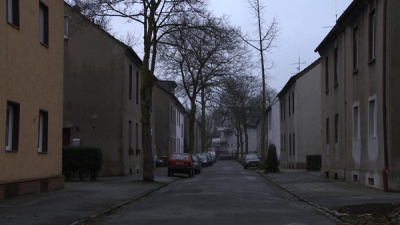
The events within shots are thrilling for their dynamics of creation: Benning chooses a photographic subject, sets up a circumscribed perspective and carves out huge chunks of time to record actions he has no control over. He knows that men in a mosque will rise and kneel at intervals, but the actions are thrillingly alienated –what we see is half-determined, and it’s fun to parse the limits of his power as an image maker as we see things that are surprising and things that aren’t, events that shift from seeming random to becoming predictable– the teasing play with predictability being a cornerstone of this type of movie. The semi-accidental wonders are of two main types: large amounts of small detail and small amounts of large detail. The shocks of event in the first shot, of an often empty traffic tunnel, include cars and bicyclists, thrown into relief against the static contours of space being burned into our vision. (The space evokes motion as, for the most part, nothing happens.) The sense of off-screen space in this shot is heightened by the sounds that announce the vehicles before they appear from behind the camera or around the curve in the tunnel that is the shot’s background. The first half of Ruhr stresses the space behind the camera and beyond its field of vision, especially in the mosque, side street and tunnel shots. In the mosque shot, with the camera parked possibly in the middle, possibly in the rear of a mass of praying men, our vision is intermittently blocked even as it increases in human detail with their rising, and we get a strong but hypothetical sense of life behind us. The receding depth shot of a side street produces the same effect, with the camera parked in the middle of a road, although in this shot periphery is highlighted, as well its convergence in the center of the frame as it recedes. It’s one of the teasing, Hitchcockian pleasures of obstinately circumscribed films like this: the suspenseful sense of how much more we could see if things were framed a bit differently.
The orchestras of tiny movement come in the second and third shots. The second shot is an interior of a factory, with the foreground dominated by an automated belt that moves jostling metal rods across the screen. The background ends against a wall, with perfectly ordered platforms and stairs, and at the center of the image is a glaring line of red hot steel. The deep-focus clarity of line makes this shot an orgy of detail, which shifts in the foreground against a backdrop of stillness, empty of humans but busy of design. The third shot is a distant view of tall, leafy trees against the sky. Every few minutes planes pass way above the trees –technology as punctuation of nature. The planes set off delayed reverberations in the trees, shaking them and making leaves fall fluttering down, the distantly whirling patterns making it almost seem like slow-motion cinematography. The first time they fall is a shock that reveals a startling retrospective continuity, and then, with the promise of more planes, we shift from surprise to suspense. What Benning and, these days, many others are working towards is a return to the skeletal effects of illusionism within the single shot. Benning makes visible the hidden narratives of basic spectatorship, of the world as well as of movies. For me the effect is romantic as much as it is intellectual, bringing me to a discovery of pleasures that originate before conscious memory: those of learning to see on a basic level. But this wonder is joined to an adult sensibility numbed by bombardment, which highlights the wonders of regression by contrast and adds to them a sense of critical alienation. Films like Ruhr liberate vision in order to interrogate it –or vice versa, I guess.
The second half of the film begins after a fade to black, itself a surprise. Part two is an extreme long shot of the top section of what seems to be an industrial ventilation tower. There’s no movement anywhere on it that I remember and, as with the factory shot, there’s a lot of man-made detail to scan, much of it at the edge of clear definition given its distance. Every now and then the tower emits what I sincerely hope is some harmless vapour; it comes out slowly, drawing together as a mass as more of it comes into the air. These silent eruptions of excess amid the rigorous inertia produce the classic structuralist movie effect: they stretch you out over a paradox. The rhythm of the emissions suggests inexhaustible rebirth, rhyming with the outrageous duration of the shot. This second half is made all the more perversely fun by the way the grandiosity of the action and setting are suppressed by Benning’s immobility. The light changes slowly but greatly during the shot (nothing is more loyal to the wonders of nature than filmic duration). This affects the detail on the tower, the shade of the smoke, and the colour of the sky –slow transformations as the unchanging industrial process continues, technology looking stronger than time.
It is an answer to the closer-range fragmentation of the first half, which in retrospect comes to look like a digest of contingent contemporary realities that we’re now seeing the fierce engine for, a pulling up of the curtain. The slices of time and repetitive modern action –driving, biking, flying, building, erasing– are given an extra vibe of contingency by their relational nature; as we get nearer to the end of the film they stand clearly as tributaries extending from a dauntingly consistent source. First we get the call: tightly focused fragments, their exclusiveness foregrounded by an emphasis on off-screen space, and with a stress on the restriction of human activity. Then we get the answer: an eternalized, towering, imperviously consistent monolith that’s inaccessible to the humans who created it. This suggestion is more rhetorical than strictly logical, but that just makes it all the more powerful. And the shift is melodic as well as metaphorical: between small-scale events in long-shot distance to grand phallic splendour in extreme-long-shot range, and between blinkered-perspective fragments and a monolith in which off-screen space plays as minimal a role as possible. Ruhr is a very Eisensteinian movie, but the radical emphasis on montage and shot-length contrast only becomes apparent towards the end. We’re forced to second guess the filmmaker in part two; after a certain length of time, we realize that this shot is a temporal counterpoint to the first half, and the relational nature of the film is further developed. The film calls its own basic structure into question for all its running time, but especially in this second half: it’s impossible to discern the shape of the film before it ends, but you can’t help trying. There’s an undeniable aspect of tease in films like this, and I can understand if it’s a game many people don’t want to play. This is minority art, which is fine. What’s not fine is that its potential audience is so radically obstructed these days, not least by our compromised educational and journalistic systems.
It’s those systems, the cultural lynchpin of late consumer capitalism, that combine with a race-to-the-bottom film market to keep artists like Benning from reaching their potential constituencies, and narrative feature films like Poetry, Putty Hill, Of Gods and Men, Cold Weather, Around a Small Mountain and A Silk Letter from reaching theirs. (As of this writing, only Gods has had anything resembling a decent commercial release in North America.) These movies are all set against the grain of standard commercial practice to one degree or another, but most of them filled a good number of seats during the fest, with few if any walkouts that I can remember. There once was an economic and cultural climate that gave films like this a fighting chance at reaching audiences in commercial release. It’s gone. Maybe the days Sontag wrote wistfully about were just a wonderful anomaly. We are where we are, but there’s a dedicated, resilient force within these margins: filmmakers like Kang Sangwoo and Matthew Porterfield, programmers like Tony Rayns and Shelly Kraicer, and festivals like the VIFF.
Endnotes
1 This point was made by Jonathan Rosenbaum in a blog message from his Reader webpage



